Sunpu Castle was built by Tokugawa Ieyasu on the site where the Imagawa family’s headquarters, Imagawa-kan, was located.
| Alias | Sunpu Floating Castle, Sunpu Water Castle |
|---|---|
| Castle Type | Flatland castle |
| Tenshu | Only the base remains |
| Castle Structure | Ring-shaped layout |
| First Builder of the Castle | Tokugawa Ieyasu for the modern castle; unknown for Imagawa-kan |
| First Construction Period | 1585 for the modern castle; unknown for Imagawa-kan |
After Ieyasu established the Edo Shogunate, Sunpu Castle was further strengthened and built as a retreat castle by the Tenkabushin.

The Charm of Sunpu Castle Based on my Judgement and Bias
*I beg to differ.
- Stronghold of the Imagawa clan, the patron feudal lords
- Place where Tokugawa Ieyasu spent his childhood
- Retirement castle of the great Tokugawa Ieyasu
- Huge layout and the ruins of tenshu
- Near Shizuoka Station, right in the middle of Shizuoka City
In this article, we will introduce the highlights of Sunpu Castle, as well as its castle seals and stamps.
Structure and highlights of Sunpu Castle

Sunpu Castle has a structure known as the Ring-shaped layout, in which the square Honmaru (Main Bailey) is surrounded by the Ninomaru (Second Bailey) and then by the Sanomaru (Third Bailey).
The Honmaru (inner moat), Ninomaru (middle moat) and Sannomaru (outer moat) were lined with water ditches. Most of the inner moat has been filled in and the outer moat has been partly filled in.
The Sannomaru area is now lined with public buildings such as schools, gymnasiums and cultural centres, while the Honmaru and Ninomaru areas are used as Sunpu Castle Park.
The following three facilities at Sunpu Castle are open to visitors for a fee, and tickets can be purchased for each facility as well as all three together.
| Facility | Price |
|---|---|
| Tatsumi-Yagura, Hitsuji-Saru-Yagura Joint Ticket | Adults ¥360 (Group ¥280), Elementary/Middle School Students ¥120 (Group ¥90) |
| Momijiyama Garden | Adults ¥150 (Group ¥120), Elementary/Middle School Students ¥50 (Group ¥40) |
Gate
Sunpu Castle has gates on the north, south, east, and west, with only the East Gate being restored.
Higashi Gomon (East Gate)
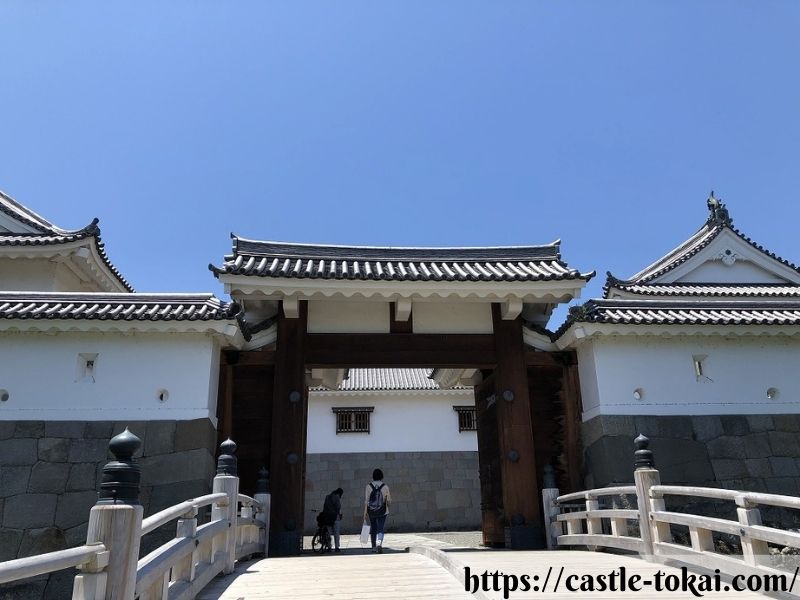

Higashi Gomon is located to the east of Ninomaru (second bailey).
Crossing the Higashi Gomon Bridge over the Ninomaru moat (middle moat), you are greeted by the Inner Masugata Gate, consisting of the korai mon, yagura mon and tamon yagura.
 Load of this site
Load of this siteWhen you pass through the gate, there is a feeling of being targeted from all sides first.
The East Gate was destroyed by fire in 1635 (Kan’ei 12), along with the keep, but was rebuilt in 1638 (Kan’ei 15). The current East Gate is a reconstruction of the gate as it appeared after the reconstruction in 1996.
The restored East Gate can be visited inside together with the Tatsumi Yagura, which has also been restored.
Yagura (Turret or tower)
Two of Sunpu Castle’s turrets, the Tatsumi- and Hitsujisaru-yagura, have been restored and can be visited inside.
Tatsumi Yagura
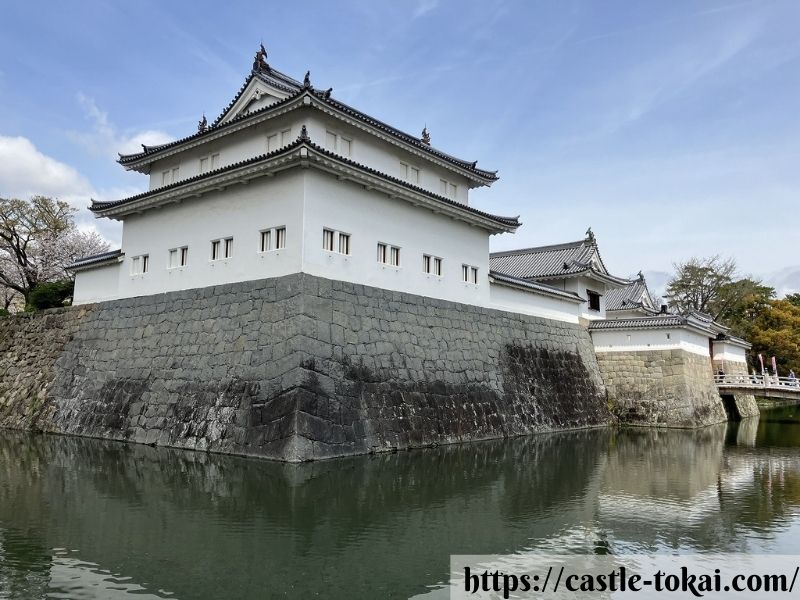

This corner turret protects the southeast corner of Sunpu Castle and was called the Tatsumi turret because of its location in the direction of the Tatsumi (Dragon-Snake).
It is a double, three-storey turret with a gabled roof.
This turret has an L-shaped plan, which is rare among castles in Japan.
As with the East Gate, it was rebuilt after being destroyed in the Great Fire of Kan’ei, but was completely destroyed in the Ansei Earthquake. The current Tatsumi Yagura was restored in 1989.
On display are a model of Sunpu Castle in the Edo period, excavated gold leaf tiles, etc.
Hitsujisaru Yagura


This corner turret in the south-west corner of Ninomaru is called Hitsujisaru Yagura, as it was located in the direction of Hitsujisaru (Sheep-Monkey).
After collapsing during the Ansei Earthquake (1854), the building was never rebuilt, but was restored in the Heisei era.
The restoration plan was based on findings from excavations, as well as references to existing turrets, such as the southwest corner turret of Nagoya Castle, a Tokugawa-era castle.
Some floor and ceiling panels have been removed to allow visitors to see the internal structure of the turret.
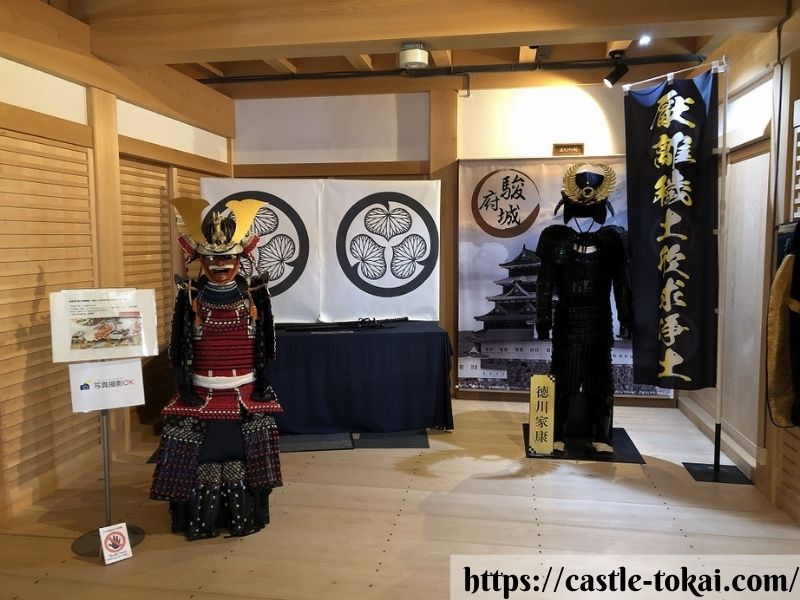

Gusoku on display in the Hitsujisaru Yagura
Left: Tokugawa Ieyasu Model
Right: Imagawa Yoshimoto Model
Hori (Moat)
The moat is one of the key defence facilities of the castle. Sunpu Castle was once protected by three moats: Honmarubori (inner), Ninomarubori (middle) and Sotobori (outer).
Honmarubori (Honmaru-Moat: Inner Moat)
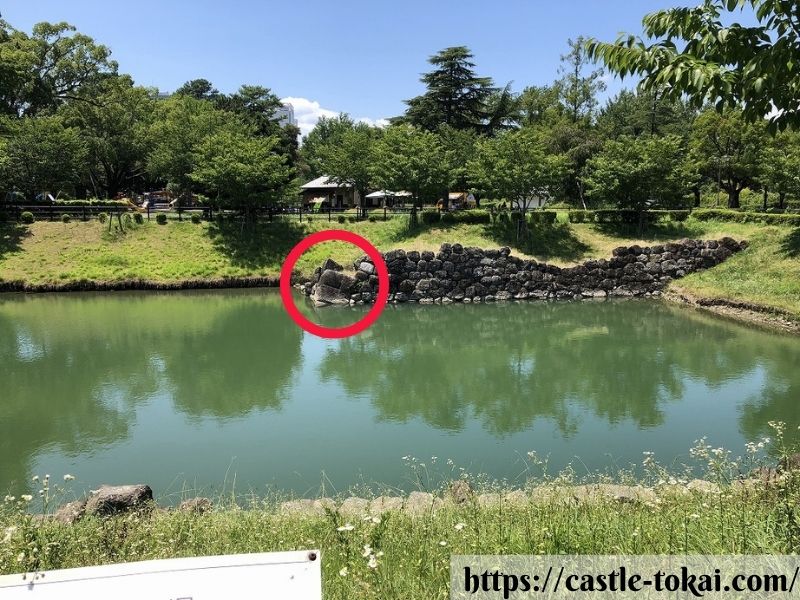

The Honmaru moat is a moat that has been revealed by excavations.
The stonewalls are uchikomi hagi. The area circled in red is the part where the stones were piled up in a method known as ‘sangi zumi’. It was approximately 23-30 m wide and 5 m deep at the time.
Ninomarubori (Ninomaru-Moat: Middle Moat)
The stonewalls of the Ninomaru moat are built in a seamless style known as kirikomi hagi. The Ninomaru moat is also used for sightseeing boats, and there is a landing place near the East Gate.
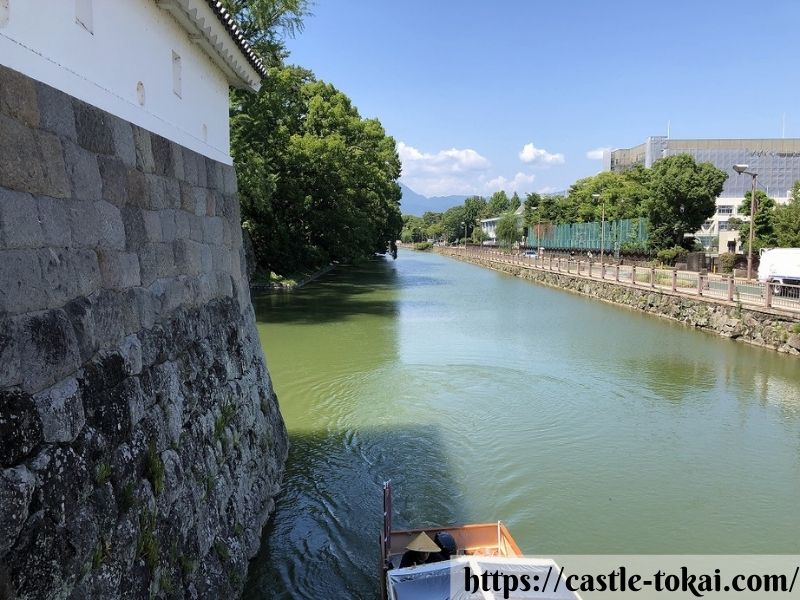

Sotobori (Outer Moat)
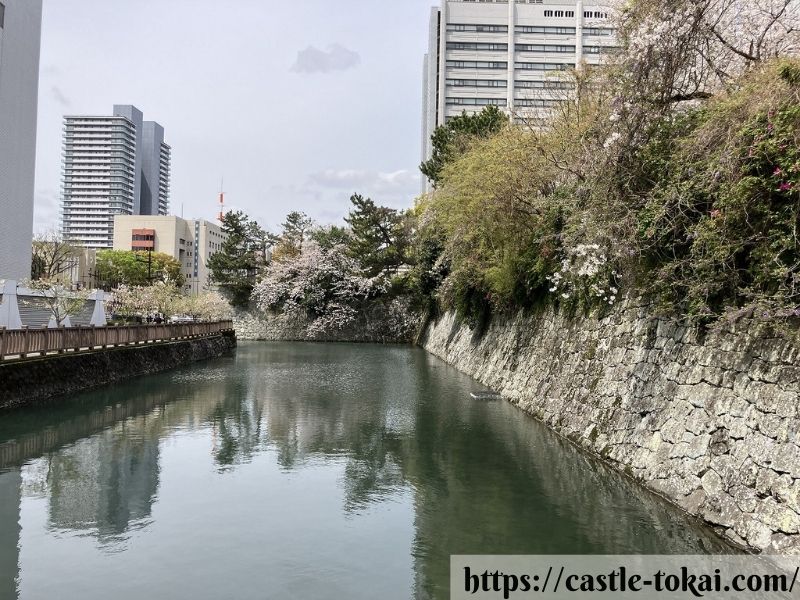

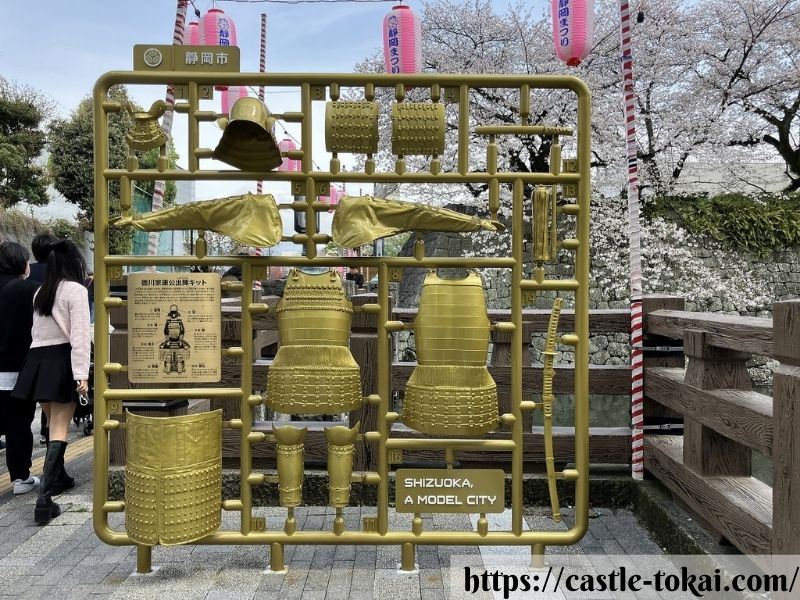

As Shizuoka City is a town of models, a plastic monument of the Kindamigusoku armour worn by Ieyasu was placed on the Jyoshiro Bridge (a bridge over the moat near the Shizuoka City Museum of History) on the outer moat in April 2023.
Waterway
Between the Honmaru and Ninomaru moats, a channel is provided to maintain the water level of the Honmaru moat.
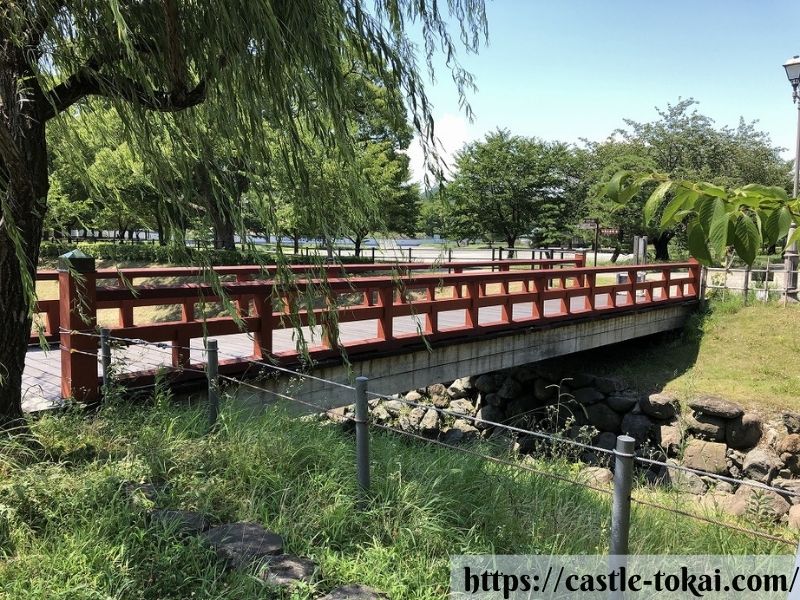

Bridge over the Ninomaru waterway
The bottom of the channel cannot be seen because it is filled with water, but it has an unusual structure with stones laid down for about 50 metres on the Honmaru side.
Tenshudai excavation site
One of the major attractions of Sunpu Castle is the tenshu excavation site.
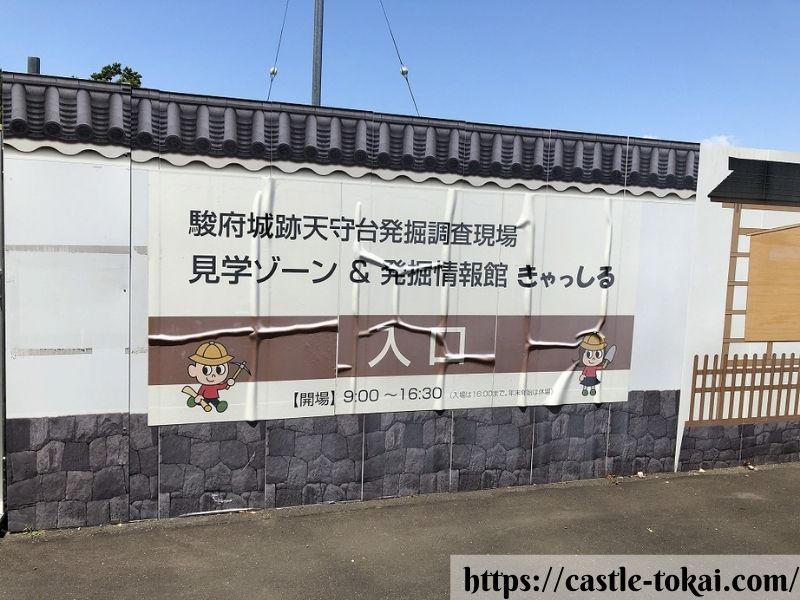

The Sunpu Castle tenshu was never rebuilt after it was destroyed by fire on two occasions.


Excavated Tensho period stone wall and Imagawa House
Excavations have uncovered a Tensho period keep inside the Keicho period keep, as well as the remains of the Imagawa pavilion from an earlier period.
The stone walls of the Tensho period are piled up in nozura zumi.
As for the remains of the Imagawa House, in addition to the yagen bori, valuable fragments of Chinese porcelain were found in the depression-shaped remains, which were valuable at the time.
The photograph below shows a small part of the excavation site. When you go around the excavation site, you will be overwhelmed by the size of the keep. The size of the Keicho period keep, which was built after Ieyasu took over, is particularly impressive.
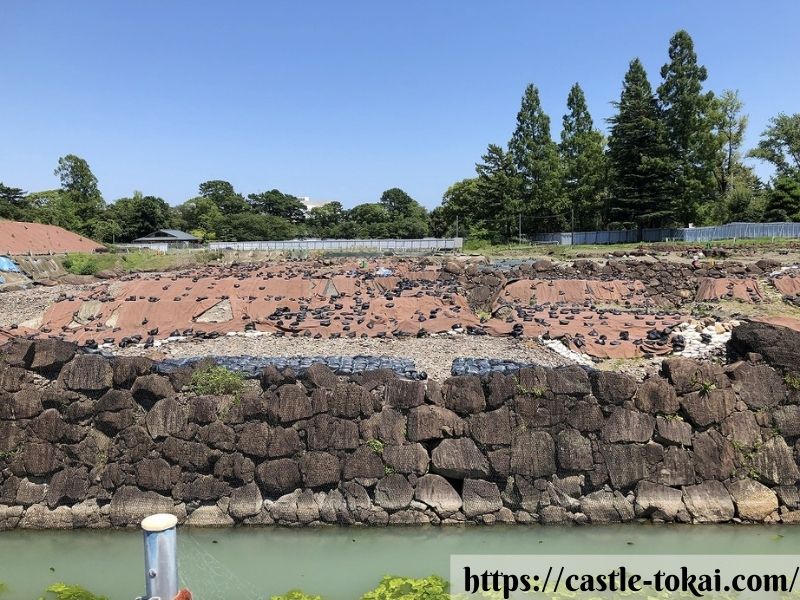

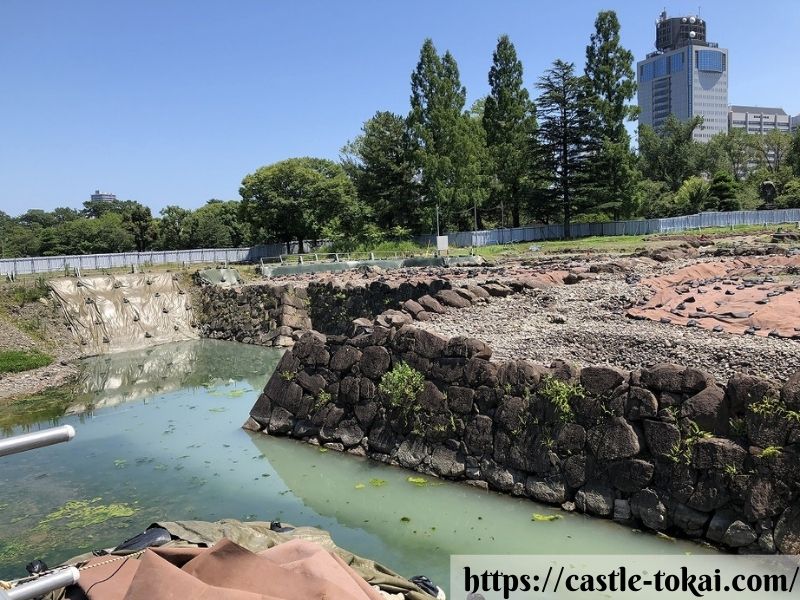

The stonewalls of the Keicho era tenshu are uchikomi hagi.
The stone walls of the tenshu have been cut away at the top, so it is not known exactly how high the tenshu would have been.
We can only use our imagination to imagine what the tenshu would have looked like on top of the huge tower, but it is easy to imagine that it would have been a gigantic tenshu befitting the great man under heaven, Tokugawa Ieyasu.
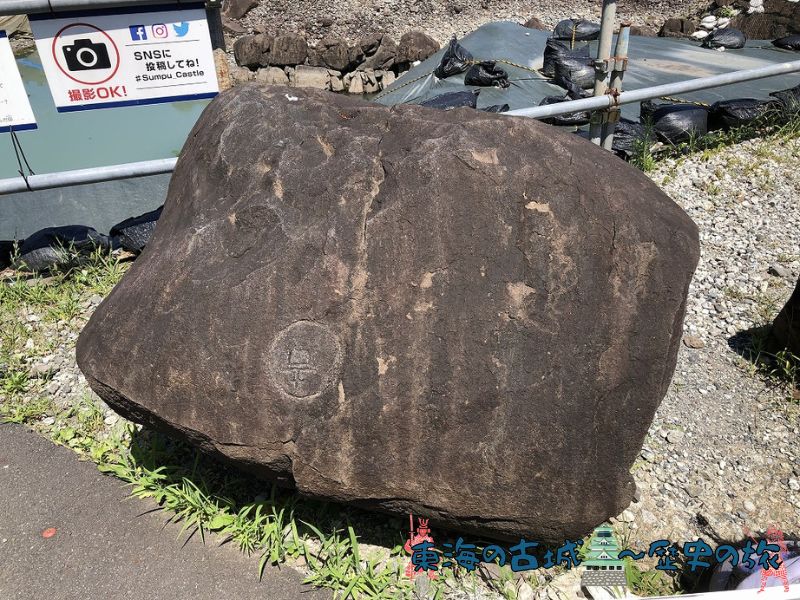

Engravings left on stones in stone walls.
Sunpu Castle was built under the Tenkabushin project. Engravings were left on the stones of the stone walls so that the various Daimyo (feudal lords) could see which part they were responsible for.
Momijiyama-Teien (Garden)
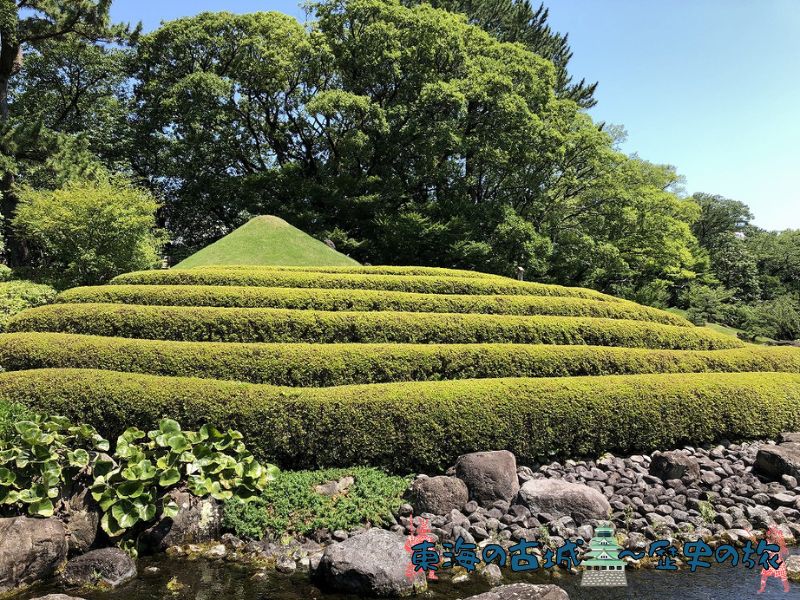







The Momijiyama Garden is a healing space with a variety of atmospheres depending on the location and angle of the view and the season.
The garden is a unique structure not found in the West, and was crowded with Westerners when cruise ships arrived at Shimizu Port.


Tea house
At the far end of the garden is a secluded tea house.



Take a short break with tea and tea sweets.
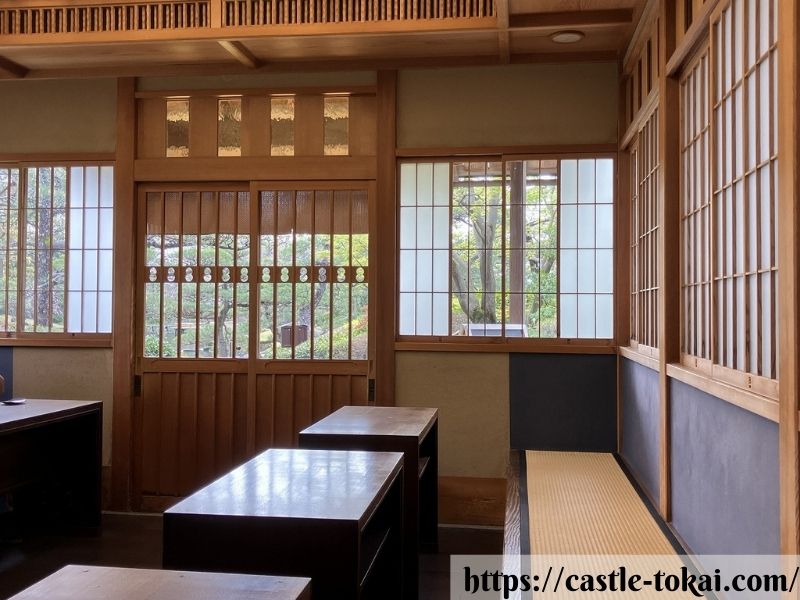

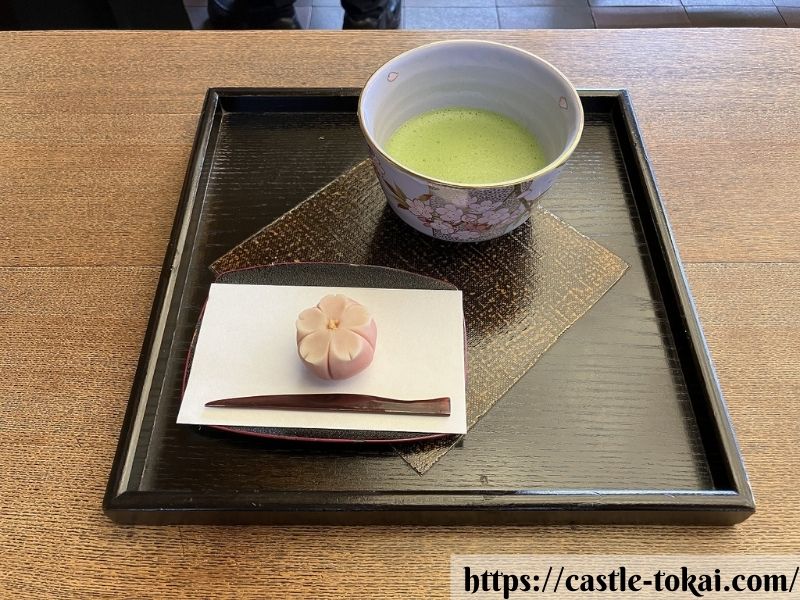

The view of the garden from inside the tea room is also tasteful.
When I visited during the Spring Festival, the tea sweets were ‘Ohka’ (cherry blossoms), in keeping with the season.
Other Sunpu Castle sites to visit
Statue of Tokugawa Ieyasu
The statue of Prince Ieyasu often seen in photos of Sunpu Castle stands to the east of the tenshu excavation site. Behind it is the tenshu excavation site.
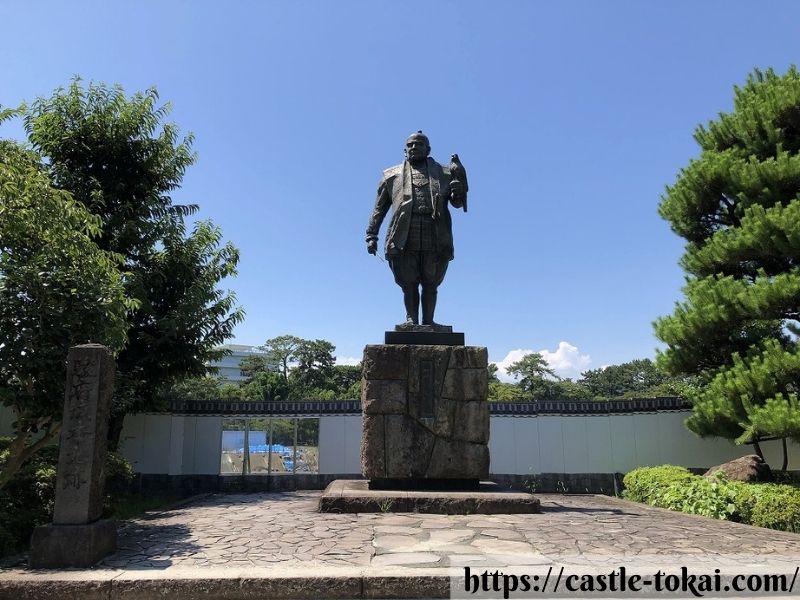

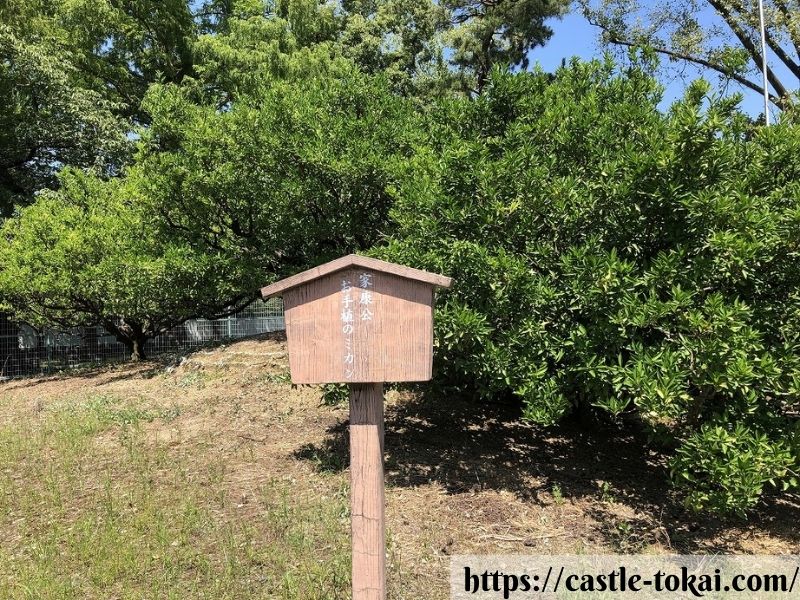

Mikan (mandarin oranges) planted by Shogun Ieyasu
There are mikans planted by Shogun Ieyasu near where the above statue of Lord Ieyasu is located.
They are still bearing fruit.
Official Web Site of Sunpu Castle
Access to Sunpu Castle
The area surrounded by the middle moat is used as Sunpu Castle Park. Some parts of the outer moat have been partly filled in and are no longer there, but the road running alongside the moat shows how the moat was laid out.
By public transport
The park is about 15 minutes’ walk from JR Shizuoka Station.
By car
Use the pay parking lots near the castle.
The car park in front of the Shizuoka Civic Cultural Centre in San-no-Maru is the closest to, or rather within, the castle.

